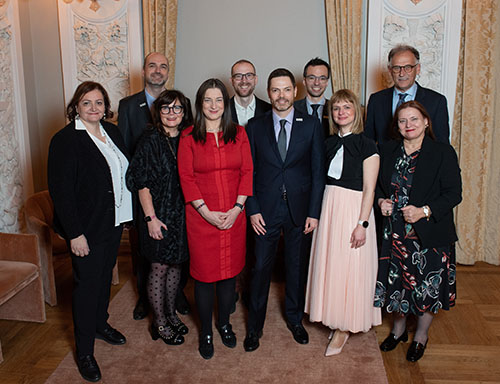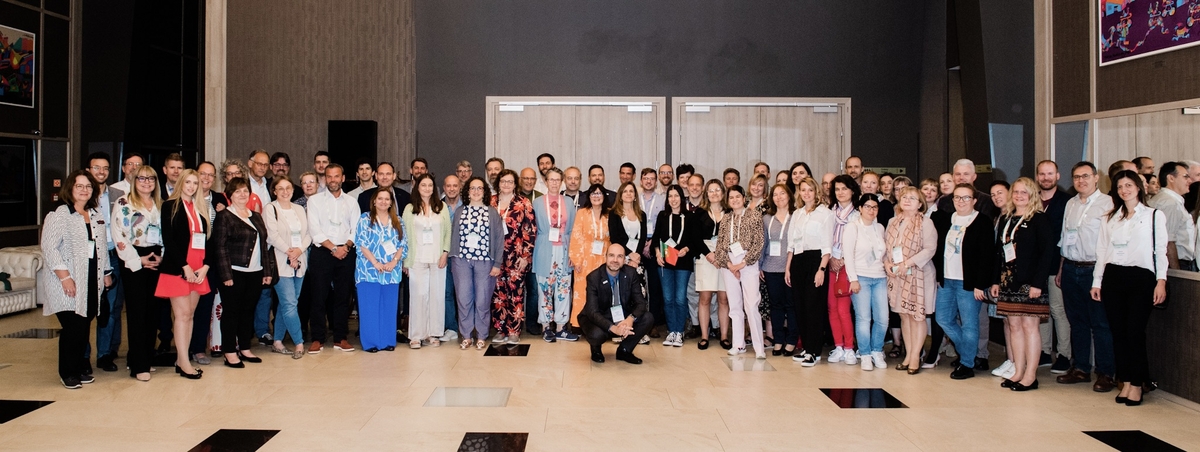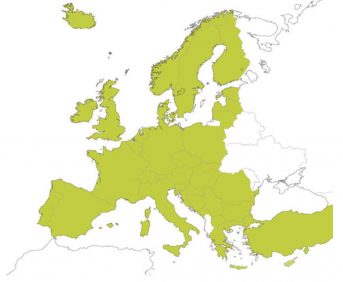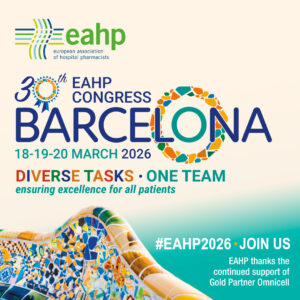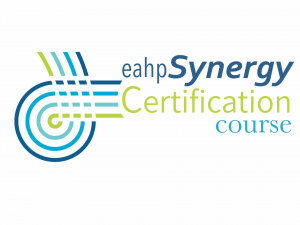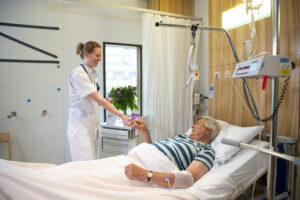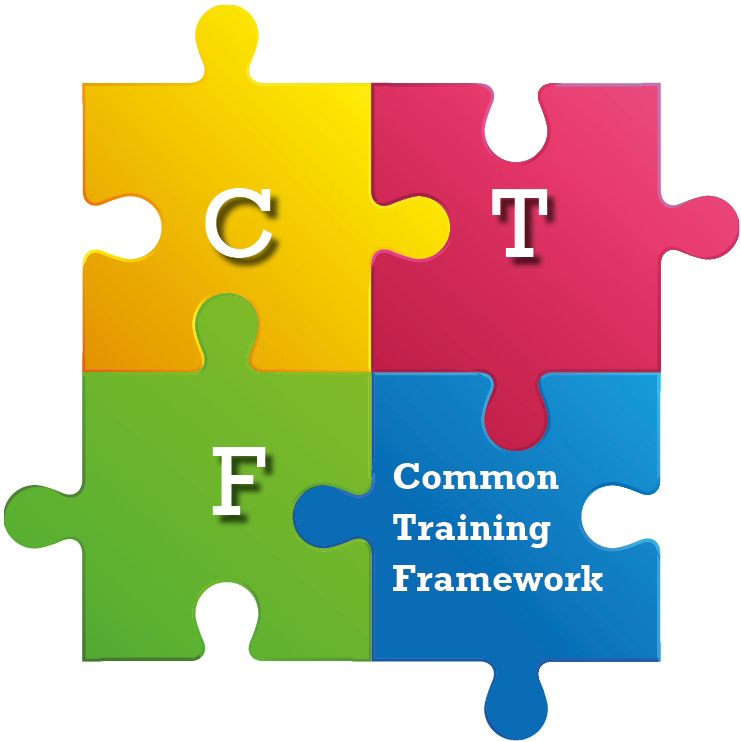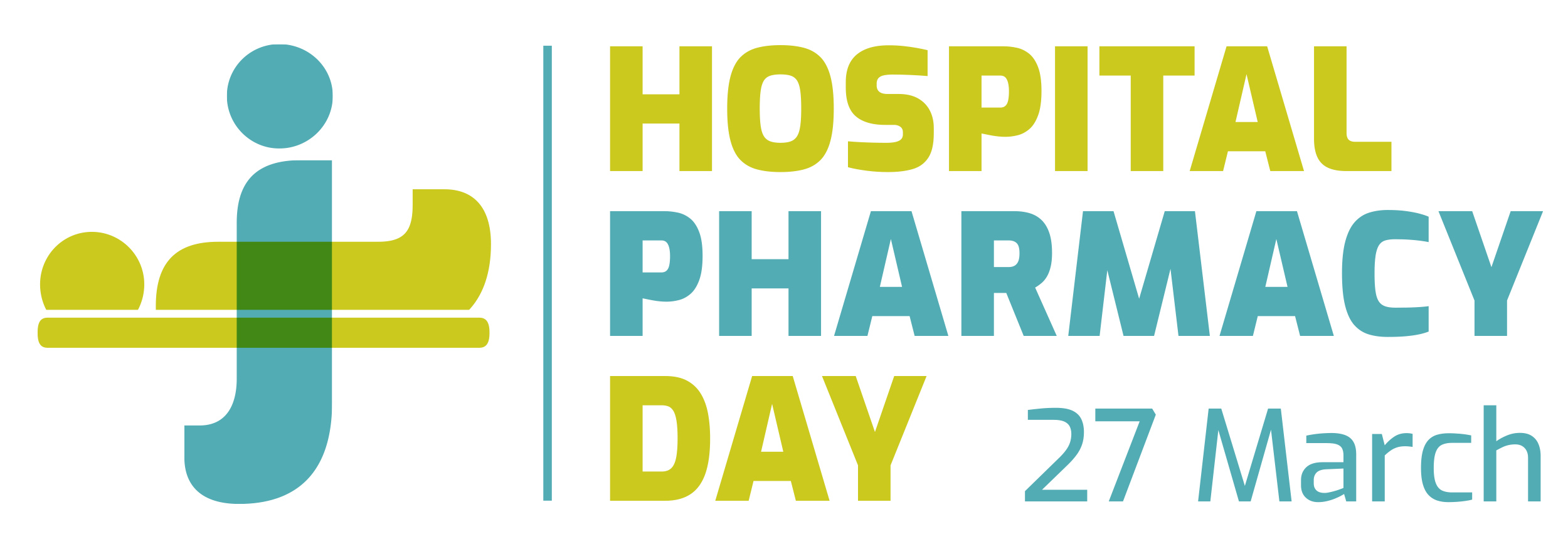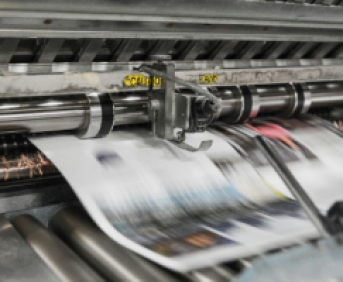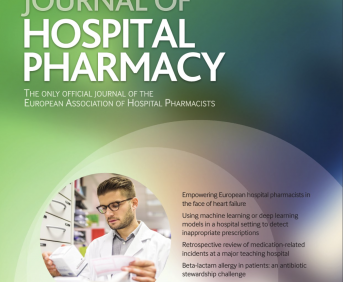Application of new indicators of antimicrobial agent use based on consumption in a tertiary hospital
Pdf

European Statement
Patient Safety and Quality Assurance
Author(s)
Saúl Herrera Carranza, Carlos Sanz Sánchez, Sira Sanz Márquez, José Francisco Valverde Cánovas, Leonor Moreno Núñez, Ana Vegas Serrano, Rafael Hervás Gómez, Oriol Martín Segarra, Juan Emilio Losa García, Montserrat Pérez Encinas
Why was it done?
Spanish Society of Hospital Pharmacy(SEFH) proposed 13 indicators(bibliography:Gutiérrez-Urbón JM, Gil-Navarro MV, Moreno-Ramos F, Núñez-Núñez M, Paño-Pardo JR, Periáñez-Párraga L. Indicators of the hospital use of antimicrobial agents based on consumption. Farm Hosp. 2019;43(3):94-100) which could help to improve the quality of antimicrobial use.
Indicators are related directly(dir): higher value-better practices; indirectly(ind):lower value-better practices; or heterogeneity: homogeneous percentages(%)-better practices.
What was done?
The creation of a tool for calculating new indicators of antimicrobial agents based on consumption using Defined Daily Dose per 100 hospital stays(DDD/100s).
How was it done?
We built an Excel tool to input required data in order to calculate the indicators with the formulas defined for their automated estimation:
-Overall antibacterial consumption(ind)
-Overall consumption of antifungals(ind)
-Consumption of carbapenemics(ind)
-Consumption of fluoroquinolones(ind)
-Ratio macrolides-p/fluoroquinolones-p(dir)
-Ratio metronidazole-p/piperacillin-tazobactam+carbapenemics(dir)
-Fosfomycin consumption(dir)
-Sequential therapy(dir)
-Ratio anti-SRSA/anti-MRSA agents(dir)
-Ratio amoxicillin/amoxicillin-clavulanic acid(dir)
-Ratio amoxicillin-clavulanic acid/piperacillin-tazobactam(dir)
-Diversification of anti-pseudomonas beta-lactam(heterogeneity): %anti-pseudomonal carbapenemics, %piperacillin-tazobactam and %anti-pseudomonal cephalosporins+aztreonam.
— Ratio fluconazole/equinocandins (dir)
DDD/100s for the years 2018-2022 were calculated in order to see the annual evolution. Required data: antibiotic (ATC Group: J01) and antifungal (ATC Group: J02) consumption by drug and route of administration (oral (o), parenteral (p) and others). Calculation of DDD/100s according to grammes consumed (obtained with Hospital Pharmacy software) and ATC/DDD-Index (World Health Organization). To visually analyse results, graphs were included.
What has been achieved?
We realised that our hospital improved by decreasing consumption of antibacterial, antifungal, carbapenemics and fluoroquinolones; and so, an early parenteral-oral switch.
However, the other ratio-based indicators are stable or worsening yearly: macrolides-p/fluoroquinolones-p, metronidazole-p/piperacillin-tazobactam+carbapenemics, fosfomycin consumption, anti-SRSA/anti-MRSA agents, amoxicillin/amoxicillin-clavulanic acid, amoxicillin-clavulanic acid/piperacillin-tazobactam, fluconazole/equinocandins and diversification of anti-pseudomonas beta-lactam.
What next?
These indicators provide possible improvement actions to enhance the use of antimicrobial agents. Consumption of fosfomycin or amoxicillin/amoxicillin-clavulanic acid ratio should be cautiously analysed due to outpatient (or in emergencies) management of uncomplicated infections. As improvement actions in our hospital, increase the use of metronidazole-p in anaerobic infections or cloxacillin and cefazolin de-escalation can be promoted as soon as sensitivity is confirmed by antibiogram-test. Diversify antibiotic pressure on pseudomonas, trying to reduce piperacillin-tazobactam by prescribing ceftazidime or cefepime, and reserving aztreonam for beta-lactams allergics. Similarly, decrease piperacillin-tazobactam use by prescribing amoxicillin-clavulanic acid if anti-pseudomonal coverage is not necessary.
Checklist for optimal pharmaceutical validation in very low-birth-weight preterm newborns in the neonatal intensive care unit
Pdf

European Statement
Patient Safety and Quality Assurance
Author(s)
IGNASI SACANELLA ANGLÈS, MARTA MARTIN MARQUÉS, JULIA BODEGA AZUARA, PILAR LÓPEZ BROSETA, DAVID PASCUAL CARBONELL, HELENA SUÑER BARRIGA, ALEJANDRO SANJUAN BELDA, CARLA DAIANA CIUCIU, SILVIA CONDE GINER, ERIKA ESTEVE PITARCH, ANTONIO GARCÍA MOLINA, SÒNIA JORNET MONTAÑA, ISABEL PLO SECO, Mª ÁNGELES ROCH VENTURA, MARÍA VUELTA ARCE, LAURA CANADELL VILARRASA
Why was it done?
The NICU is a complex area of paediatric hospitalisation that necessitates specialised healthcare professionals. The role of the NICU pharmacist is vital in ensuring the appropriate and optimised use of medications in various critical situations.
What was done?
To develop a checklist that facilitates pharmacotherapy validation for preterm newborns (PTNB) weighing less than 1000 g and hospitalised in the neonatal intensive care unit (NICU). The primary objective is to ensure a higher quality of hospital care in terms of pharmacotherapy.
How was it done?
We conducted a literature review to identify the pharmacotherapy requirements for preterm newborns (PTNB) weighing less than 1000 g during their first 30 days of life.
In order to design the checklist, we compiled various elements, including drugs, dosages, treatment duration, initiation date, and drug monitoring (when necessary). Additionally, we incorporated recommendations for specific scenarios.
What has been achieved?
The drugs considered for this supportive tool include: pulmonary surfactant, ampicillin, gentamicin, fluconazole, caffeine, ibuprofen, iron (ferrum), dexamethasone, nystatin, vitamin D3, and other vitamins. The checklist was designed to cover the first 30 days of life.
From day 0 to 1: Administer pulmonary surfactant and caffeine citrate. For antibiotic prophylaxis, use ampicillin and gentamicin, and fluconazole for antifungal prevention. In cases of an open ductus arteriosus, intravenous ibuprofen should be added.
Between day 10 to 15: Administer vitamin D3 and a multivitamin complex if the neonate tolerates oral administration. If there is a risk of bronchopulmonary dysplasia, which is characterized by more than 7 days of intubation and difficulty with extubation, consider adding dexamethasone and nystatin.
From day 15 onward: Monitor ferritin and vitamin D3 levels. Begin oral iron supplementation (ferrum) 30 days after birth. Both drugs should be continued for one year.
We have included dose adjustments in case of renal or hepatic dysfunction and pharmacokinetic monitoring for antibiotics. In cases where meningitis is suspected, we have provided recommendations for increasing the dose to ensure adequate penetration into the central nervous system.
What next?
This tool simplifies pharmaceutical validation, particularly for pharmacists who may not specialise in the care of these complex patients. By utilising this tool, we can reduce errors and enhance the quality of care provided to preterm newborns (PTNB) weighing less than 1000 g.
Digital transformation of injectable ophthalmic medication circuit: enhancing safety and efficiency
Pdf

European Statement
Patient Safety and Quality Assurance
Author(s)
Catarina Diogo, Rui Caceiro, Maria Helena Duarte, Armando Alcobia
Why was it done?
The core objective of healthcare institutions is to ensure patient safety and maintain the highest quality of care throughout every medical procedure.
This principle must extend to the drug circuit as well. Within our hospital, pharmaceutical services have a dedicated route for producing injectable ophthalmic medications, serving 795 patients and yielding 3720 solutions, in 2022. However, the existing paper-based procedure for medication management is laborious, time consuming and error-prone, demanding full-time constant pharmacist involvement to ensure the secure progression of these medications.
What was done?
A software application was developed on the Power Apps platform to streamline medication management for injectable ophthalmic medications. This application aimed to replace manual paper-based procedures with digital solutions, enhancing efficiency, reducing errors, and providing a comprehensive platform for patient registration, prescription tracking, schedule management, and oversight of injectable solutions’ production.
How was it done?
Over two months, needs of pharmaceutical and ophthalmology services were assessed, soliciting input from pharmacists, ophthalmologists, nurses and administrative personnel. Subsequently, a software application was developed featuring four distinct interfaces, customised for each professional group involved. This application enables patient registration, medical prescription, schedule management and monitoring the injectable solutions’ production – prescription and agenda validation, batch management and generation of identification labels.
This project is presented, therefore, as a customised digital solution, the result of a multidisciplinary collaboration.
What has been achieved?
It is the authors’ belief that this software has allowed for the development of a safer, more efficient, and integrated workflow, as an alternative to paper – which is more prone to errors. In this manner, from a pharmaceutical perspective, it simplifies the workflow, freeing the pharmacist to focus on other important tasks and optimizing personnel management. Furthermore, it is also valuable for ophthalmologists, enabling prescription repetition and access to patient history, as well as for administrative staff, streamlining schedule management. In conclusion, this software is set to transform our injectable ophthalmic medication circuit.
What next?
Further studies confirming its advantages are needed. Its validation would establish its potential and applicability across healthcare settings.
Sustainable adherence in the sector transition for schizophrenia patients
Pdf

European Statement
Patient Safety and Quality Assurance
Author(s)
Lene Juhl Biltsted, Louise Stilling Rasmussen
Why was it done?
In Denmark, patients with schizophrenia receive free antipsychotic medication for the initial two years post-diagnosis. Post this period, patients transition to the primary sector and assume the medication costs. Historically, the clinic dispensed larger medication quantities, offering short-term relief but not addressing the issue. This approach risks medication waste. The new workflows empower healthcare professionals to help patients establish stable financial arrangements with local pharmacies, curbing fluctuating medication expenses. This enhances patient safety by reducing at-home medication stockpiles. Financial barriers often undermine patient compliance. Healthcare professionals strive to aid patients, curbing relapses and readmissions, through rational, sustainable medication management that minimises resource wastage.
What was done?
Training improved healthcare professional’s understanding of the Danish medication subsidy system and options for deferment in the primary sector.
The healthcare professionals’ new knowledge has provided the foundation for the development of optimised workflows in the treatment process, ensuring a more sustainable medication management during the transition to the primary sector. The project establishes the framework for reducing the risk of medication waste upon the patient’s completion of treatment at the clinic.
It also created a favourable setting for healthcare providers to collaborate with patients, enhancing adherence.
How was it done?
Healthcare professionals received training on deferment arrangements, subsidies, and compliance, with supervision from clinical pharmacists.
Patient cases were analysed to determine factors for future guidelines.
Guidelines were formulated to aid healthcare professionals during the patients’ transition to the primary sector.
A tool (calculator) was created for assessing the patients’ economic choices regarding medication expenses.
What has been achieved?
Healthcare professionals gained confidence in guiding patients on stable medication expenses.
Enhanced rational and sustainable medication use by incorporating the seven rights.
New guidelines now allow an appropriate quality assurance strategy to ensure sustainability and adherence.
Tool to assess medication costs which improves the patients adherence in the sector transition.
Lowered risk of over/under treatment and improper storage.
Diminished treatment failure risk by predicting patient medication expenses during the primary sector transition
What next?
In the next 6 months, the clinic will trial the established guidelines and routines with patients concluding their 2-year treatment.
Revolutionising pharmacy recognition: evolution of the Australian and New Zealand College of Advanced Pharmacy
Pdf

European Statement
Education and Research
Author(s)
Tom Simpson, Kristin Michaels, Kylee Hayward, Nick Sharp-Paul
Why was it done?
The need to establish a recognition framework that resonated with pharmacists, aligned with their career journeys, and held tangible benefits prompted the inception of ANZCAP. Recognising that existing programmes lacked broad appeal, ANZCAP aimed to redefine recognition in a way that was meaningful, inclusive, and motivated pharmacists towards continuous development.
What was done?
The Australian and New Zealand College of Advanced Pharmacy (ANZCAP) represents a pioneering advancement in pharmacy recognition and career progression. Addressing the limitations of previous models that struggled to gain broad support, ANZCAP emerged as a strategic response to bridge the recognition gap within the pharmacy profession.
How was it done?
The development of ANZCAP commenced with the acquisition of the Advancing Practice (AP) credentialing programme by the Society of Hospital Pharmacists of Australia (SHPA). Previous efforts to engage pharmacists with the programme were reassessed, and a comprehensive review process was initiated to devise an innovative and pragmatic model of recognition. Development comprised multiple phases, including qualitative surveys, workshops, focus groups, and expert consultations. An iterative approach was adopted to refine the model, culminating in a prospective, merit-based system that recognises specialty areas and levels of practice. The focus shifted from individual competencies to broader domains within the National Competency Standards Framework for Pharmacists in Australia 2016, fostering flexibility and practicality.
What has been achieved?
ANZCAP has already recognised pharmacists at all levels – Resident, Registrar, and Consultant – through a Prior Professional Experience process. The college also extends its reach globally, welcoming international pharmacists to join its transformative community.
What next?
ANZCAP’s future involves strengthening the alignment of recognition with promotion and remuneration mechanisms, enhancing engagement among pharmacists. By seamlessly integrating learning experiences with Continuing Professional Development (CPD) activities, ANZCAP aims to foster a culture of lifelong learning and advancement. In the broader landscape, ANZCAP’s journey involves cultivating partnerships with international pharmacy associations, leveraging collective expertise, and fostering an inclusive recognition culture. The programme’s evolution will be guided by feedback, research, and a commitment to advancing pharmacy practice globally.
Integration of Farmis-Oncofarm ® and Oncosafety RC® pharmacy software to improve safety in the administration of antineoplastic drugs with intelligent infusion pumps
Pdf

European Statement
Patient Safety and Quality Assurance
Author(s)
MARÍA ELENA CÁRDABA GARCÍA, SILVIA FERNÁDEZ PEÑA, AMPARO SALVADOR PALACIOS, MERCEDES FERNÁNDEZ PRIETO, CLAUDIA GONZÁLEZ GONZÁLEZ, MARÍA TERESA SÁNCHEZ SÁNCHEZ
Why was it done?
Antineoplastic drugs, chemotherapy specifically, are a clear example of “high risk” medications. The drug administration phase, within the drug utilisation circuit, is where the highest incidence of errors has been detected, ranging between 38%-81%, so the development and implementation of tools aimed at improving security at this stage is very important.
What was done?
The integration of Farmis-Oncofarm ® and Oncosafety-RC® pharmacy software was done, in order to improve the prevention, detection and reduction of medication errors in the administration phase of antineoplastic treatment in the Onco-Haematology Day Hospital (OHDH).
How was it done?
A Drug Library was created in Farmis-Oncofarm® software (v.4.0.11.107). Dosage units, stability, standard concentrations, maximum and minimum doses, time and infusion rate, and preparation and administration recommendations were parameterised and standardised. Parameters for the implantation of Oncosafety-RC® software (accepted percentage of volume deviation in the mixtures, types of intravenous lines, possible adverse reactions, drugs to be used in case of extravasation) were also defined. When the connectivity between Farmis-Oncofarm® and Oncosafety RC® was validated, Oncosafety RC® was implemented in the OHDC.
To evaluate the results of the implementation of this strategy, a retrospective study from May 2022 to May 2023 was carried out. Collected data, obtained from Oncosafety RC® software were: number of mixtures (antineoplastic, supportive drugs and intravenous fluid therapy) and treatments administered, dose deviations, adverse events, incorrect infusion rates, errors avoided due to incorrect medication.
What has been achieved?
12,294 treatments (44,898 mixtures) have been administered in OHDC.
Dose deviations were registered in the 0.01% of the mixtures, due to adverse events that required termination of the infusion. Only three adverse events happened in the study period.
The infusion rate was incorrect in the 0.5% of the mixtures; this information is useful to improve drugs administration and prevent infusion-associated reactions.
This strategy prevented errors due to incorrect medication on 2,499 occasions.
What next?
The integration between Farmis-Oncofarm® and Oncosafety RC® has improved the security in the administration of onco-haematological treatments, allowing the reduction of administration and medication errors. This strategy can be implemented in hospitals that have assisted electronic prescription software and information management software between different clinical management systems and infusion pumps.
Impact of drug-drug interaction alerts on prescribing patterns in a teaching hospital
European Statement
Patient Safety and Quality Assurance
Author(s)
Joana Pinto, José Feio, Sebastião Silva, Francisco Machado, Ana Dinis, Margarida Abreu, João Peres, Mariana Guia
Why was it done?
Clinical decision support systems comprising information on DDI improve DDI risk detection, avoiding preventable patient harm. The resulting DDI alerts can change prescribers’ behaviour to benefit patient care. However, an excessive number of alerts can lead to alerts’ desensitisation by prescribers.
What was done?
We monitored the drug-drug interactions (DDI) alerts displayed in the prescription system through three subsequent homologous periods, occurring after the integration of a DDI database in the prescribing software system of a teaching hospital to assess its impact on the prescribing pattern.
How was it done?
We developed a DDI database – MedH® – to be integrated into the prescribing software system to support hard stop DDI alerts. only the higher clinical risk DDIs were included in this database in order to restrain the burden of alerts and warrant acceptance by health professionals.
Data of all inpatient hospital prescriptions over a 12-month period prior to MedH® implementation were extracted and intersected with MedH® DDI BD to identify the top 10 co-prescribed binomials at risk of severe DDI. The number of alerts for the same binomials was then monitored through three subsequent, post-implementation, homologous periods.
What has been achieved?
Considered the TOP10 observed in the pre-implementation period, the number of alerts for all binomials has consistently reduced over the three post-implementation periods analysed.
The integration of MedH® DDI BD into the prescribing system, resulted in changes in the prescribing pattern, translated by a decrease, between 67% and 100%, in the number of alerts for a sample of control risk binomials coinciding with the top 10 co-prescribed risk binomials observed in the pre-implementation period. These results reflect the good acceptance by the professionals and the didactic effect achieved by the exposure to alerts.
More importantly, these results are indicative of the effectiveness of the implementation of MedH® Alerts in reducing patient exposure to high-risk combinations of medicines, thus promoting patient safety.
What next?
It will be important to ensure that data from IDD alerts are rigorously analysed to recognise clinical situations in which the co-administration of risk binomials is justified, to ensure consistent application of recommended risk minimisation measures, and the availability of safer therapeutic alternatives whenever possible.
Setting in situation of pharmaceutical validation of paediatric intensive care prescriptions by fifth year students: state of play and assessment
Pdf

European Statement
Education and Research
Author(s)
Omar HANAFIA, Pierre BERTAULT-PERES, Stéphane HONORE
Why was it done?
This internship was proposed to diversify the clinical pharmacy internship opportunities and to allow students to discover and understand paediatrics and intensive care, which are less covered in university courses. It will also be a proof of concept to develop this type of internship in other departments.
What was done?
We have proposed a new clinical pharmacy internship in immersion in paediatric intensive care to 5th year students. It is a hospital internship at the interface between the medical and pharmaceutical teams, the student is responsible for establishing a statement to analyse the drug management, its evaluation and improvement.
How was it done?
The clinical pharmacy student is a full-time employee, fully integrated into the medical team. Their day is divided into two parts: in the morning they attend the relief, the staff and the medical visit. In the afternoon, he/she takes over the patients, compiles the main medical, clinical and biological information in order to pharmaceutically prevalidate the medical prescriptions and propose pharmaceutical interventions (PI) to the pharmacist.
What has been achieved?
Since its opening, the position has been systematically chosen by the students, in 3 years 8 students have chosen it. After a training period of 1 month with the senior pharmacist, all students were able to perform the expected readings, prevalidation and PI. More than 78% of the PIs detected by the students were validated by the senior pharmacist and accepted by the physician.
What next?
This proof of concept shows that students are supportive of this type of initiative and are able to meet the high expectations of this internship.
Implementation in a pharmacy service of a big data analysis programme for successful treatment
Pdf

European Statement
Patient Safety and Quality Assurance
Author(s)
LUCIA SOPENA, ALBERTO FRUTOS, VICENTE GIMENO, OLGA PEREIRA, RAQUEL FRESQUET, ARITZ MERCHAN, REYES GARCIA, PAULA GOMEZ, ALBERTO APESTEGUIA, MARIA ANGELES ALLENDE, TRANSITO SALVADOR
Why was it done?
The growing technological development of pharmacy services involves the coexistence of traditional warehouses with automated medicine dispensing systems controlled by different computer programs. The information is split into different systems and databases giving rise to possible errors due to the greater complexity. This is a threat but also an opportunity for the hospital pharmacist to lead the development, review, and improvement of medicine use processes and the use of health technologies to improve quality of care, patients’ safety and reduce costs. KNIME data analysis covered the need of our Pharmacy Service to blend data from any source in a single file simplifying the process.
What was done?
The Pharmacy Service of a university hospital has implemented Konstanz Information Miner (KNIME) data analysis and develop successful treatment project to optimise the stock management of several medicines.
How was it done?
An initial algorithm was designed by the union of seven files and can be executed at any time to obtain the updated data.
What has been achieved?
This file provides up-to-date information about the stocks, stock-outs, consumptions, orders and purchasing data of all medicines (average price, laboratory, date and number of orders, units to be received).
In addition, KNIME calculated the coverage time in days and months from weekly and monthly consumption, and the current stock in the warehouses, obtaining a global vision of highest turnaround pharmaceuticals drugs.
The program also allows to link and merge data of the list for shortages of medicines, supply disruptions and restocking time, and to improve the storing, delivering and administering of COVID-19 vaccines.
KNIME program has been especially important in our Pharmacy Service to get better care outcomes and more precise medication ordering, which allows significantly higher patient safety.
What next?
KNIME is a tool that could be successfully implemented and appropriately generalised as recommended to all Pharmacy Services that use different data sources and want to have a generalised view of the information. KNIME represents an advance in the stock and purchase management of medicines specialties to work more efficiently, which improve patient care and safety. Digital medication management also contributes to greener pharmacies by preventing unnecessary overstocking and thus excessive disposal arising from expired medications.
Opioids room of horrors – an interactive learning to improve safety of drug administration
Pdf

European Statement
Patient Safety and Quality Assurance
Author(s)
Sophia Hannou, Cristina Nicorici, Patricia Spitz, Samuel Cotte, Wanda Bosshard, Nancy Perrottet, Pierre Voirol, Farshid Sadeghipour
Why was it done?
Medication use process is at high risk especially for opioids. In our geriatric rehabilitation unit, self-reporting incidents are submitted regularly to our quality system. Among the 44 drugs incidents reported in 2021, 11 included opioids. Prevention with training is a way to reduce these errors. However, theoretical teaching covering the “5 rights” rule remains insufficient. Therefore, an interactive learning with a room of horrors focused on opioids was selected by our unit to prevent these errors. The objective was to cartography and identify the most risky steps and to introduce specific actions to reduce these risks.
What was done?
A room of horrors with a specific focus on opioids has been developed and implemented to reduce errors in medication circuit.
How was it done?
An interprofessional group created the room of horrors based on real incidents. Fictional patient, clinical situation and opioid prescription were created in the medical software. Several drugs and medical devices were available. A model wore an identification bracelet. Ten errors, covering the five rights, were hidden in the room. A pair of healthcare givers had 20 minutes to realise the simulation (5 for the briefing, 10 for the exercise and 5 for debriefing).
What has been achieved?
During the World Patient Safety Day 2022, 38 healthcare professionals (19 nurses, 10 assistant nurses, 9 geriatricians) participated to this training. Errors were detected in variable proportions. For example, 58% of the participants uncover the patient identification error, 53% the pharmaceutical form, 53% the expired date, 47% the allergy contraindication and 47 % used the oral syringe.
What next?
Results and theoretical notions will be presented to all professionals of the unit. This room of horrors is transposable and can be used in other units of the hospital. A video of this simulation was created as an e-learning. It will be implemented as a continuous training or for new collaborators in our unit and can be shared to other units of the institution. Incidents will be continuously monitored and the training will be adjusted in the future. Based on the success of the room of horrors, this interactive learning will be used in other areas with other clinical or technical dimension.
